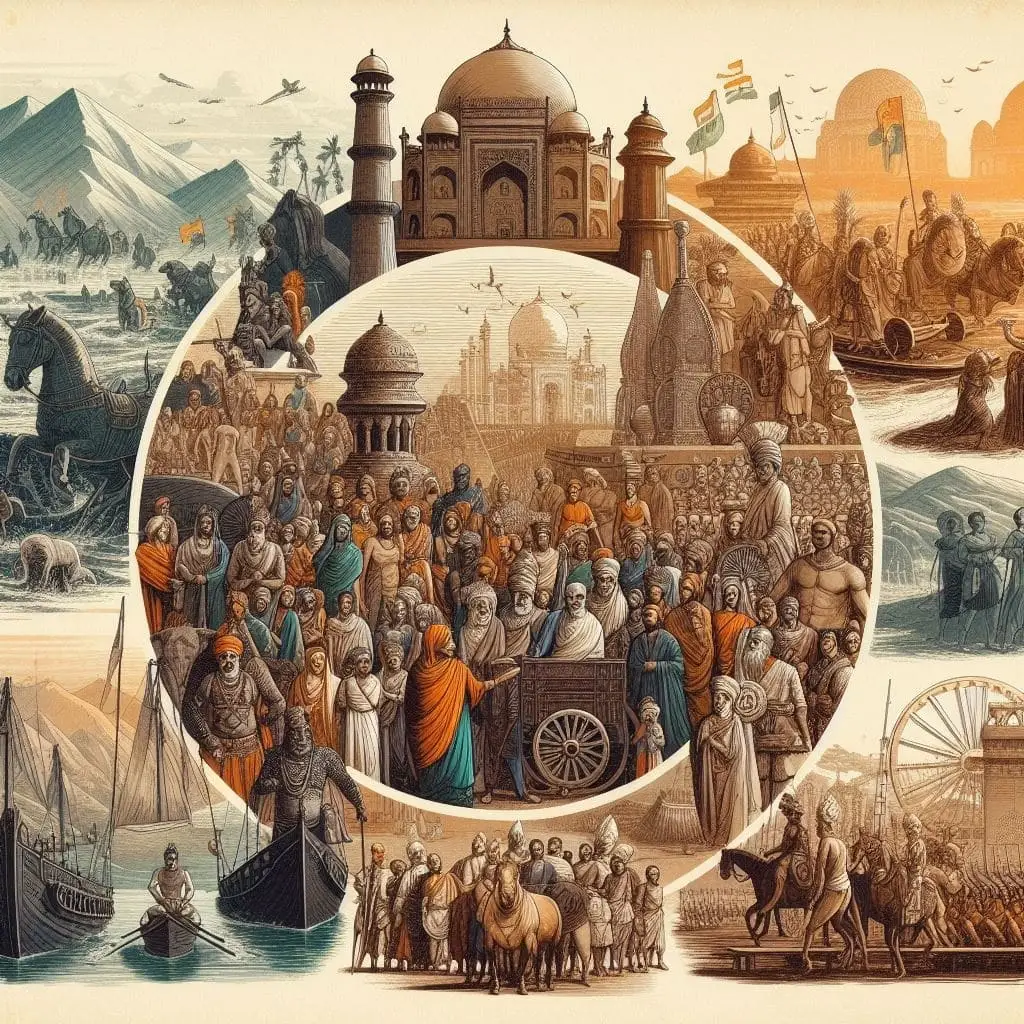Indian History Chronology: Starting a journey through Indian history,this guide provides a succinct exploration from the Paleolithic era to the Information Technology Revolution. Offering a quick overview, it navigates key milestones, civilizations, and movements, making it an accessible resource for anyone seeking a rapid understanding of Ancient, Medieval, and Modern India.
Ancient India (Pre-Historic to 700 AD)
- Paleolithic Period (2 million BC – 10,000 BC)
- Earliest evidence of human habitation in India.
- Stone tools and cave paintings as archaeological remnants.
- Mesolithic Period (10,000 BC – 8,000 BC)
- Adaptation to a warming climate by hunter-gatherer communities.
- Emergence of microliths and other artifacts.
- Neolithic Period (8,000 BC – 4,000 BC)
- Formation of the first settlements.
- Introduction of agriculture and domestication of animals.
- Indus Valley Civilization (3300 BC – 1300 BC)
- Flourishing civilization along the Indus River.
- Advanced urban planning, plumbing systems, and a unique script.
- Vedic Period (1500 BC – 500 BC)
- Arrival of Indo-European speakers.
- Composition of the Vedas, sacred Hindu texts.
- Iron Age (1000 BC – 300 BC)
- Emergence of powerful kingdoms like Magadha.
- Use of iron tools and weapons.
- Rise of Jainism and Buddhism (6th – 5th centuries BC)
- Founding of Jainism by Mahavira and Buddhism by Buddha.
- Challenge to the existing social order.
- Mauryan Empire (322 BC – 185 BC)
- Zenith under Emperor Ashoka.
- Promotion of peace, Buddhism, and establishment of trade routes.
Medieval India (700 AD – 1857 AD)
- Gupta Empire (320 AD – 550 AD)
- Golden Age marked by progress in art, literature, science, and mathematics.
- Contributions to the cultural and intellectual heritage of India.
- Chalukya and Pallava Dynasties (6th – 8th centuries AD)
- Flourishing of South India under these dynasties.
- Architectural marvels like the Shore Temple in Mamallapuram.
- Delhi Sultanate (1206 AD – 1526 AD)
- Establishment by Muslim rulers from Central Asia.
- Introduction of new administrative systems and Indo-Islamic architecture.
- Mughal Empire (1526 AD – 1857 AD)
- Founded by Babur.
- Peak under Akbar with religious tolerance and cultural exchange.
Modern India (1857 AD – Present)
- First War of Independence (1857)
- Rebellion against British rule.
- Marked the beginning of the independence movement.
- Formation of Indian National Congress (1885)
- INC as the leading voice for Indian self-rule.
- Utilization of non-violent protests and civil disobedience.
- Independence and Partition (1947)
- Achievement of independence from British rule.
- Tragic partition into India and Pakistan.
- Jawaharlal Nehru and the Era of Progress (1947 – 1964)
- Nehru’s role in laying the foundation for modern, democratic India.
- Focus on industrialization, education, and social reforms.
- Green Revolution (1960s – 1970s)
- Introduction of new agricultural practices.
- Transformation from a food-deficient to a self-sufficient nation.
- Information Technology Revolution (1990s – Present)
- Emergence of India as a global hub for IT services.
- Significant contributions by tech giants like Infosys and TCS in the digital economy.
